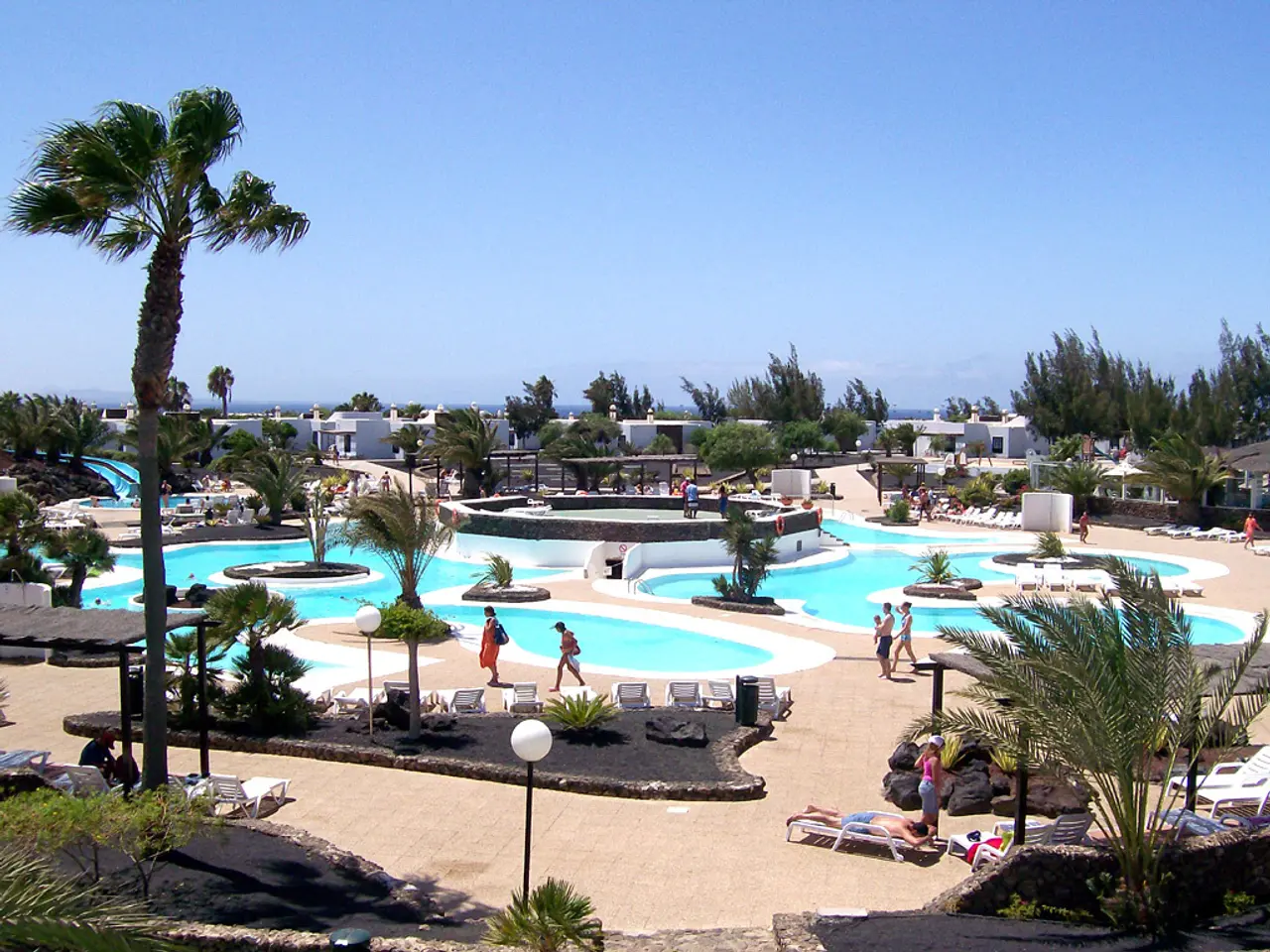Summer tourism in Hawaii experiences a decline, with a decrease in arrivals
Hawaii Tourism: A Mixed Bag of Challenges and Recovery
Hawaii's tourism industry is experiencing a complex mix of challenges and recovery signs, according to recent reports.
Chris Kam, president and chief operating officer of Omnitrak TravelTrak America, has observed a shift in local travel patterns. More kamaaina travelers are opting for staycations, and Hawaii saw a slight increase in U.S. West travelers in June, likely due to the convenience of last-minute booking specials. However, the overall airfare component of the travel price index shows a 3.5% decrease for June, but motor fuel dropped 8.2%, a trend that works against Hawaii.
The slowdown in Hawaii tourism in 2025 and beyond is primarily due to a decline in international visitors. Factors such as rising travel costs, stricter visa regulations, competition from other destinations, and economic/geopolitical instability in travelers' home countries are causing this decline. Additionally, less flight capacity and smaller numbers of Canadian visitors contribute to fewer arrivals overall.
Despite the decrease in visitor numbers, there are signs of recovery. Visitor spending rose significantly in May 2025 compared to 2024, with a 9.4% increase to $1.69 billion, even though the number of visitors was slightly down compared to pre-pandemic 2019 figures. This reflects a trend toward fewer but higher-spending tourists, aligning with Hawaii’s goal to attract better-managed, higher-spending visitors rather than more volume.
Hotel occupancy is affected by reduced international arrivals but partly offset by domestic visitors and targeted markets. Some islands like Kauai have exceeded 2019 benchmarks in both visitors and spending, while Maui is still recovering from last year's wildfire but shows increased spending despite fewer visitors. Resort operators and airlines benefit from higher per capita spending even as visitor counts decline.
The Hawai'i Convention Center will be shut down for at least 2026 and 2027 to complete $100 million worth of repairs, which could lead to the loss of millions of dollars in group bookings. Keith Vieira, principal of KV &Associates, Hospitality Consulting, stated that Hawaii as a state has had a minimal tourism marketing effort since the pandemic. This, coupled with increased competition from destinations like the Caribbean, Mexico, and Florida, who are investing in tourism marketing and doing well, could further impact Hawaii's tourism industry.
Jerry Gibson, president of the Hawai'i Hotel Alliance, expressed concern about the average daily room rate being off about 18% from what hoteliers had budgeted across the islands in June 2025. Josh Hargrove, general manager of The Westin Maui Resort &Spa, stated that the $6.3 million infusion is helpful but came late for the summer season, and more marketing money is needed to fully recover Maui tourism. Hargrove also expressed concern that Maui has struggled to get the message out that it has fully reopened and welcomes visitors.
The Hawai'i Tourism Authority is collaborating with the Los Angeles Rams on a yearlong Los Angeles market activation campaign to promote tourism on Maui. However, the visitor industry in Hawaii is concerned about a potential continued decline throughout 2025 and into 2026. In June 2025, arrivals to Hawaii decreased by 1.8% compared to the same month in the previous year, amounting to 857,102 visitors. Arrivals from all international markets outside of Japan and Canada fell by 8.6% in June 2025, while arrivals from Hawaii's largest visitor source market, the U.S. West, grew by just 0.8%. Arrivals from the U.S. East and Canada also declined by 3.8% and 12.3% respectively. Arrivals from Japan, Hawaii's largest international market, dropped by 4.3% in June 2025 compared to the same month in 2024.
In summary, the tourism slowdown in Hawaii is multifaceted, involving economic, regulatory, and market dynamics that reduce visitor volume, especially international. However, the impact on spending and occupancy is moderated by a shift toward higher-value tourism and efforts to manage visitor numbers sustainably. Hawaii's tourism industry is facing challenges, but there are also signs of recovery and resilience.
The trends in Hawaii's tourism industry reveal a shift in business trajectory, with local travel patterns seeing more kamaaina opting for staycations and a slight increase in U.S. West travelers, while the decline in international visitors continues, coupled with the loss of millions of dollars in group bookings due to the Hawai'i Convention Center's repairs.
Despite the overall visitor number decrease, Hawaii's lifestyle sector is showing signs of recovery, with visitor spending significantly increasing and some islands reaching pre-pandemic benchmarks in both visitors and spending. This alignment towards fewer but higher-spending tourists is in line with Hawaii’s goal to attract better-managed, higher-spending visitors rather than large volumes. However, increased competition from other destinations and minimal tourism marketing efforts further impact the industry.




